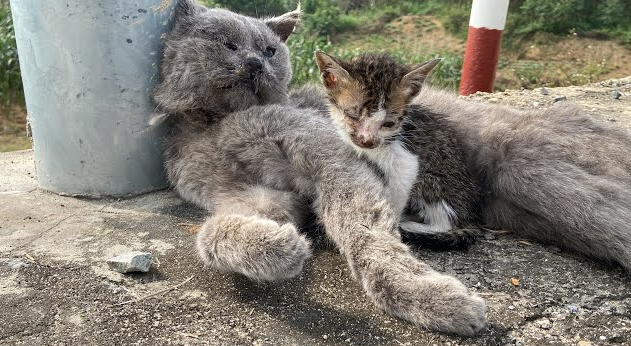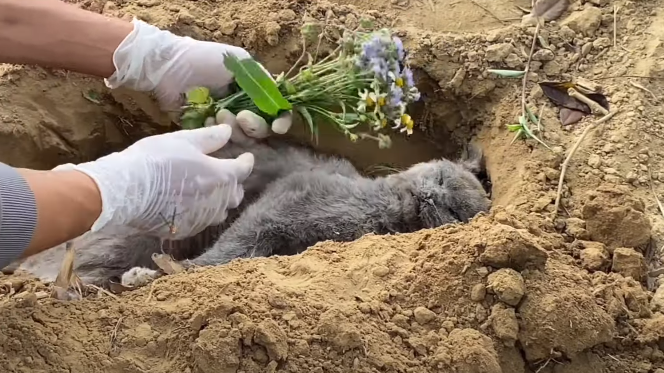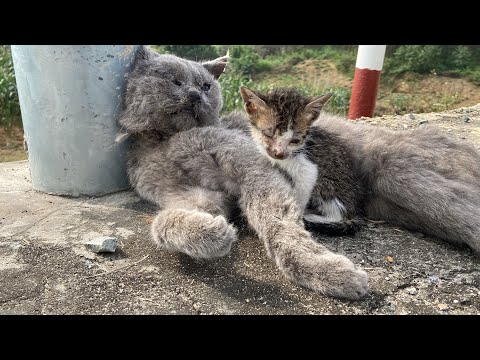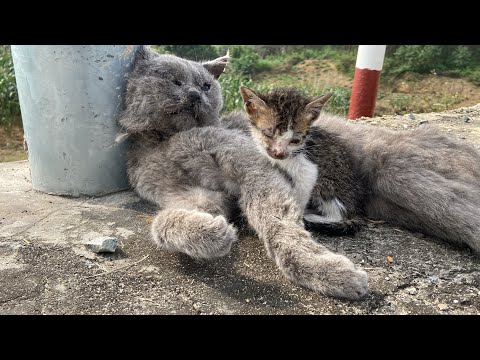In the bustling heart of the city, where the rhythm of life pulses through crowded streets, a poignant scene unfolded. A little cat, her plaintive cries echoing through the urban cacophony, sat forlornly beside her mother amidst the indifferent passersby. This heart-wrenching tableau spoke volumes about the intersection of human busyness and the silent cries of those often overlooked.
The mother cat, her eyes a reflection of weariness and resignation, curled protectively around her tiny offspring. They sought solace and warmth in the midst of an unforgiving world, a world preoccupied with its relentless pace, oblivious to the struggles of these feline souls. The little cat’s cries, a desperate plea for attention and care, resonated like a silent melody in the midst of the urban symphony.

Yet, as the city dwellers hurried past, their faces etched with the strains of daily life, their steps remained unaffected by the small family’s plight. The indifference of the passersby mirrored a societal disconnect, a collective oversight of the quiet suffering that often exists on the periphery of our fast-paced lives. Oblivious to the scene unfolding before them, the human tide surged forward, leaving the feline duo in its wake.

In the midst of this apathy, the mother cat maintained a steadfast vigil over her distressed offspring. Her maternal instinct, a universal force that transcends species, radiated an unwavering love that, despite the apparent hopelessness of the situation, refused to be extinguished. The little cat’s cries, a poignant reminder of vulnerability and dependence, seemed to echo not only in the alleyways of the city but also in the corridors of human conscience.
It is in these moments of intersection between the human and animal worlds that a choice emerges. A choice to look beyond our daily preoccupations, to acknowledge the silent pleas for compassion that reverberate through the city’s alleys. The little cat’s tears became a metaphor for the collective responsibility we bear towards the vulnerable and voiceless, a call to action amidst the indifferent hum of urban life.

Perhaps, hidden within the indifference of passersby, lies the potential for empathy and change. The simple act of stopping, acknowledging, and extending a helping hand can disrupt the apathy that so often characterizes our busy lives. In the silent exchange between the little cat and the world that passed her by, there exists an invitation—a chance for humanity to rediscover its capacity for compassion and connection, even in the most unexpected corners of the cityscape.

The little cat’s tears, like droplets in a vast sea of humanity, may seem inconsequential, but they possess the power to stir the collective consciousness. For within the silent cries of a little cat lies the opportunity to bridge the gap between indifference and empathy, to forge a connection that transcends the boundaries between species and reminds us of the shared vulnerability that unites all living beings in the tapestry of existence.

